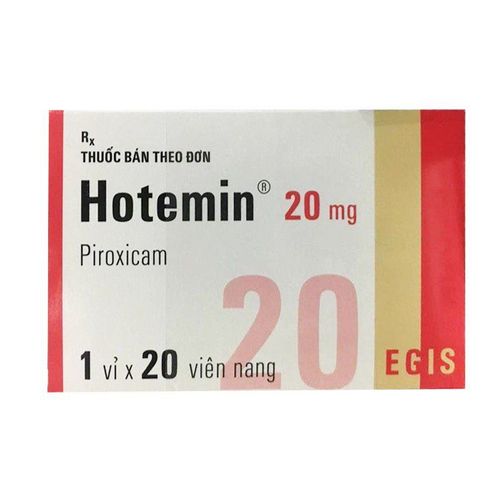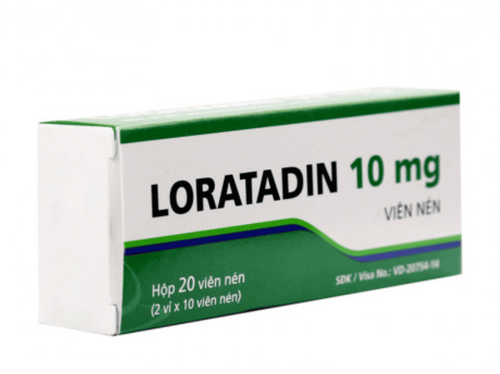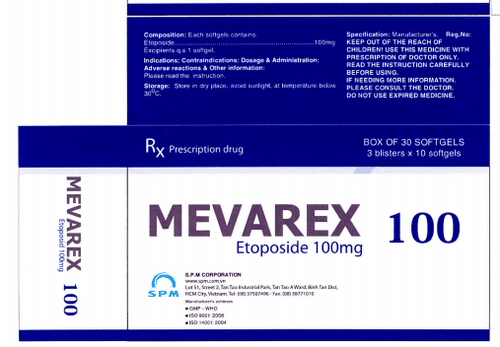This is an automatically translated article.
Colergis is a drug used in the treatment of allergies and hypersensitivity cases. Below is information about Colergis drug, its uses as well as instructions for proper use of the drug.
1. What is Colergis?
Colergis is an anti-allergic drug manufactured by PT Ferron Par Pharm - Indonesia.
Colergis medicinal products are packaged in 60 ml vials, in the form of syrup.
Ingredients in Colergis 60 ml solution include: Betametasona, dexlorfeniramina.
Betamethasone is a synthetic derivative of Prednisolone. Betamethasone is an adrenal corticosteroid with anti-inflammatory properties. Betamethasone has potent anti-inflammatory, anti-arthritic and anti-allergic properties and is used in the treatment of corticosteroid-responsive disorders. Betamethasone is slowly metabolised, mainly in the liver and to a lesser extent in the kidneys, and is excreted in the urine.
Dexchlorpheniramine maleate is a propylamine derivative antihistamine. Dexchlorpheniramine competitively inhibits the pharmacological action of histamine (a histamine H1-receptor antagonist).
2.What does Colergis do? Used in endocrine, musculoskeletal, collagen disorders, skin, allergies, eyes, respiratory, blood, cancer and other diseases that respond to corticosteroid treatment. Specifically:
Hormonal disorders: Primary or secondary adrenocortical insufficiency, congenital adrenal hyperplasia, non-fusing thyroiditis, and cancer-associated hypercalcemia. Musculoskeletal Disorders: Used as a short-term adjunctive treatment to help patients overcome the acute phase of psoriatic rheumatism; rheumatoid arthritis (in some cases low maintenance doses may be used); ankylosing spondylitis; acute and subacute bursitis; nonspecific acute synovitis; leprosy; acute rheumatic fever and synovitis. Colloid disease: In the maintenance treatment of some cases of systemic lupus erythematosus, acute rheumatic myocarditis, scleroderma and dermatomyositis. Dermatology: Pemphigus disease; herpetiform vesicular dermatitis; severe erythema multiforme (Stevens-Johnson syndrome); exfoliative dermatitis; fungal warts; severe psoriasis; allergic eczema (chronic dermatitis) and urticaria. Allergic Cases: Used in cases of severe allergies or failure of conventional treatments, e.g. cases of seasonal or persistent allergic rhinitis, nasal polyps, bronchial asthma (incl. including asthma), contact dermatitis, atopic dermatitis (neurodermatitis), drug and serum reactions. Eyes: Acute and chronic inflammatory or allergic processes involving the eyes such as allergic conjunctivitis, keratitis, allergic corneal ulceration, shingles, iritis, iridocyclitis , chorioretinitis, anterior fasciitis, encephalitis and anterior choroiditis spreading posteriorly, optic neuritis, sympathetic ophthalmia; central retinitis; posterior optic neuritis. Respiratory: Symptomatic sarcoidosis; Loeffler syndrome not controlled by other methods; berylium poisoning; in combination with chemotherapy in the treatment of acute and disseminated pulmonary tuberculosis; pneumothorax; pulmonary fibrosis. Blood: Spontaneous and secondary thrombocytopenia in adults; autoimmune hemolytic anemia; erythrocytopenia and anemia due to hereditary hypoplasia; reaction to the parenteral route. Cancer: Temporary treatment of leukemia, lymphoma in adults and acute leukemia in children. Edema: Diuretics or proteinuria do not cause uremia in primary nephrotic syndrome or lupus erythematosus; angioedema. Other indications: Tuberculous meningitis with obstruction or risk of subarachnoid obstruction, after treatment with corresponding anti-tuberculosis chemotherapy; ulcerative colitis; Bell's paralysis.
3. Dosage of anti-inflammatory drug Colergis
Adults and children ≥ 12 years old:
1 teaspoonful every 4-6 hours, not more than 6 teaspoons/day. Children 6 - 12 years:
1/2 teaspoon every 4-6 hours, not more than 3 teaspoons/day; 2 - 6 years: teaspoon every 4-6 hours, no more than 1.5 teaspoons/day. Infants and children under 6 years of age:
Dosage will be accurate based on response and severity of disease rather than age, weight or body surface area. The drug should be taken with food or milk to reduce gastrointestinal side effects. Dosage should be adjusted according to the patient's condition and response, and when an appropriate response is achieved, it should be gradually reduced to the lowest dose sufficient for a permanent clinical response. In long-term treatment, the use of the drug should be gradually reduced. Before long-term treatment, patients should first have electrocardiogram, blood pressure, chest and spine X-ray, check blood sugar and HPA axis function, and gastrointestinal radiography for patients prone to confusion. digestive disorders. During long-term therapy, periodic evaluation of height and weight on chest and spine radiographs, hematopoietic system, electrolytes, glucose tolerance, blood pressure and intraocular pressure should be performed. 4. Treatment with drugs Colergis in some skin diseases Dust or pollen allergies are difficult to treat: On the first day, use a dose of 1.5 to 2.5mg/day, divided into several times. Then gradually reduce 0.5mg per day until symptoms recur. Adjusted dose should be maintained throughout the course of the illness (usually no longer than 10 to 14 days) and then discontinued. Celestone should only be used as adjunct to other appropriate antiallergic therapies when required. Systemic lupus erythematosus: An initial dose of 1 to 1.5 mg 3 times a day for several days is appropriate; although sometimes higher doses may be needed to achieve a satisfactory response. Then gradually reduce the dose to an adequate maintenance dose (usually 1.5 to 3 mg/day). Skin disease: Initial dose is 2.5 to 4mg/day, until desired effect is achieved. Then reduce 0.25 to 0.5mg every 2 or 3 days until the maintenance dose is reached. In short-term and self-limiting disorders: It is usually possible to discontinue the drug without causing a relapse after the disease is under control within a few days. Dosage is very variable in long-term treatment. 5. Contraindication to anti-inflammatory drug Colergis Hypersensitivity to Betamethasone and Sulphite; Patients on treatment with monoamine oxidase inhibitors (MAOIs);Patients with systemic fungal infections; Newborns and premature babies; Systemic fungal infections; The patient is being vaccinated; Peptic ulcer . 6. Side effects when using Colergis Some side effects that may occur when using Colergis anti-inflammatory drugs include:
Common:
Nervous system: Drowsiness, headache, dizziness, weakness, psychosis; Digestive system: Dry mouth and digestive disorders such as loss of appetite, nausea, vomiting, constipation, diarrhea; Ear, nose and throat: Nose and throat; Metabolic: Disturbances in fluid and electrolyte balance, HPA axis suppression; Eyes: Glaucoma ; Musculoskeletal system: Myopathy, loss of muscle mass. Rare:
Metabolic: Adrenal cortical atrophy and secondary adrenal insufficiency; increased susceptibility to infections, especially at high doses; edema, sodium retention, potassium loss, alkalosis; hypokalemia and hypertension, hypocalcemia, endocrine disorders; decreased glucose tolerance, hyperglycemia and exacerbation of diabetes mellitus; Eyes: Causes posterior subcapsular cataracts, especially in children, intraocular pressure and glaucoma; destruction of the optic nerve; Digestive system: Gastrointestinal effects such as nausea, vomiting, anorexia causing weight loss, increased appetite causing weight gain, diarrhea, constipation, abdominal distention, pancreatitis, stomach irritation and ulceration management; Nervous system: Nervous effects such as dizziness, insomnia, restlessness, depression and anxiety. When experiencing side effects of the drug, it is necessary to stop using it and notify the doctor or go to the nearest medical facility for timely treatment.
7. Note when using the drug Colergis
For women who are pregnant, Colergis should not be used because it can cause harm to the fetus. Women who are breastfeeding should not use. Use of Colergis may impair the ability to drive or use machines (drowsiness, dizziness, weakness). Use appropriate dosage, consult your doctor or healthcare professional. The article has provided information about what Colergis drug treats, how to use it and how to use it. To ensure safety when using the drug, patients should consult their doctor before using.
Please dial HOTLINE for more information or register for an appointment HERE. Download MyVinmec app to make appointments faster and to manage your bookings easily.













